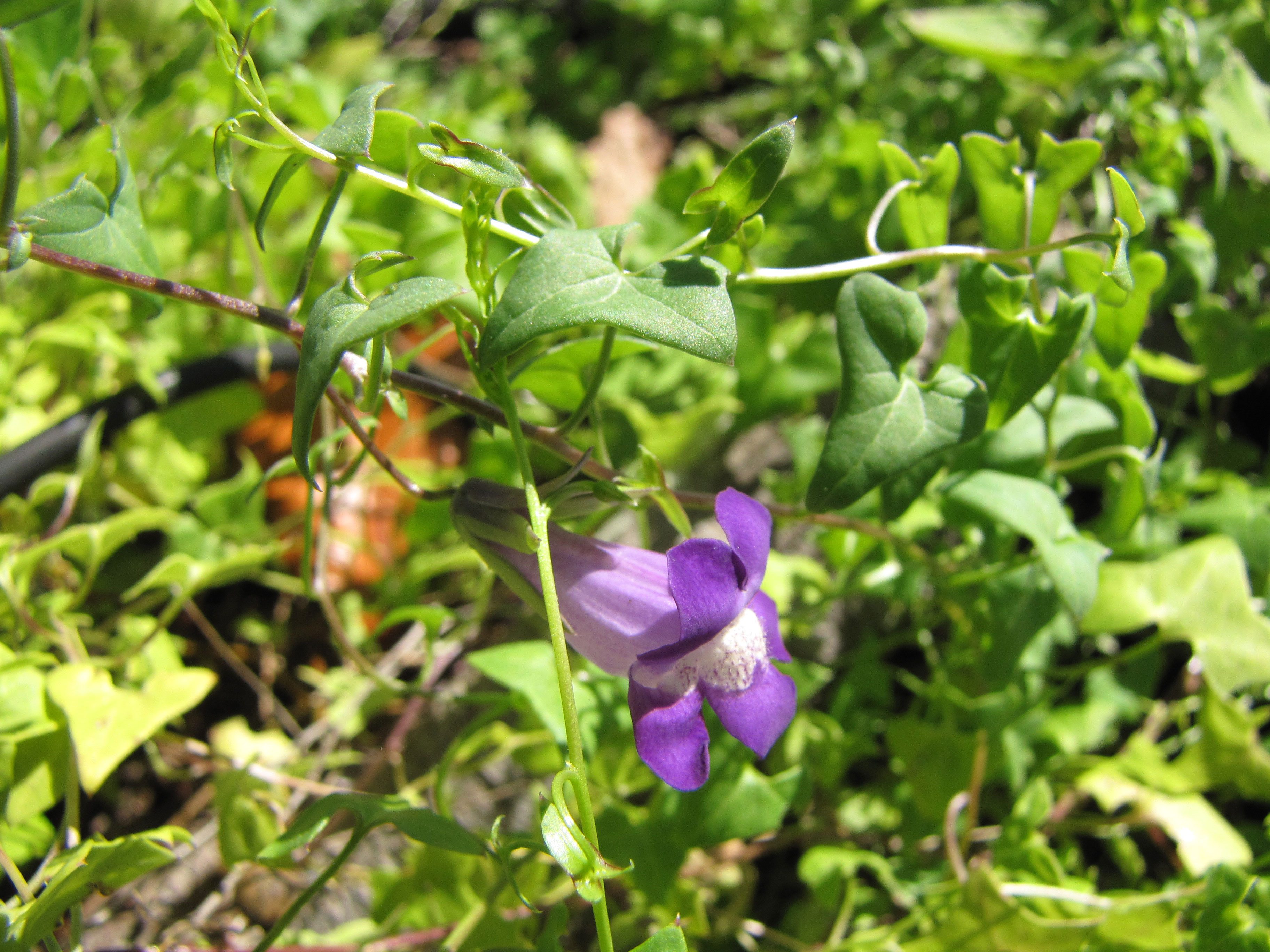Climbing Snapdragon Plant - Tips For Growing A Snapdragon Vine


Gardeners in warmer areas of the U.S., zones 9 and 10, can beautify an entryway or a container with the delicately flowering, climbing, snapdragon plant. Growing a climbing snapdragon vine, Maurandya antirrhiniflora, is easy, especially in hot temperatures.
Climbing Snapdragon Plant
Native to the southwestern United States, the climbing snapdragon plant can also grow in zone 8 if temperatures warm quickly in spring. This heat-loving specimen, also called hummingbird vine, is another of the sub-tropical annual vines southern gardeners can grow for a late summer bloom. Small, arrowhead shaped leaves and colorful, snapdragon-like blooms on a non-aggressive climber make snapdragon vine perfect for small spaces and containers. Flowers of the climbing snapdragon plant are not large, so plant them in an area where they can be seen and appreciated during bloom time. Most cultivars of snapdragon vines have pink, purple, or wine colored flowers with white throats.
Tips for Growing a Climbing Snapdragon Vine
Without support, however, snapdragon vines may slowly spread and creep. Reaching no more than 8 feet (2 m.) in height, climbing snapdragon vines can be pinched back for a bushier appearance and more cascading stems from a container. It can climb on an arching trellis or entryway porch frame. Snapdragon vines climb by twining and will attach to any available support, even well-anchored string. Growing climbing snapdragon vines is easy from seed. Plant outside when soil has warmed. Plant seeds in a full sun to lightly shaded area. Snapdragon vines are adaptable to a range of soils and will tolerate a sandy loam with sea spray. If allowed to go to seed, expect more plants to appear in the area next year.
Care of Climbing Snapdragons
Although somewhat drought tolerant, watering is an important part of the care of climbing snapdragons. Regular watering encourages more blooms and makes them last longer. As they are fairly vigorous growers once established, little to no fertilizing is necessary. After learning the ease of care of climbing snapdragons, make sure to include them in your summer garden for a perky native plant that does not invade or destroy other native vegetation.
Gardening tips, videos, info and more delivered right to your inbox!
Sign up for the Gardening Know How newsletter today and receive a free copy of our e-book "How to Grow Delicious Tomatoes".

Becca Badgett was a regular contributor to Gardening Know How for ten years. Co-author of the book How to Grow an EMERGENCY Garden, Becca specializes in succulent and cactus gardening.
-
 Looking For Plants To Give You The Soft And Fuzzies? Try These 5 Fuzzy Leaf Plant Options
Looking For Plants To Give You The Soft And Fuzzies? Try These 5 Fuzzy Leaf Plant OptionsLovers of texture, drama, silver foliage and tactile plants will adore these special sensory garden additions. These fuzzy leaf plant options will leave you all aglow
By Susan Albert
-
 Get Ready For A Summer Of Hummers! Grow These Full Sun Hummingbird Plants and Flowers
Get Ready For A Summer Of Hummers! Grow These Full Sun Hummingbird Plants and FlowersIf you’re lucky enough to enjoy a sunny backyard, make sure you are maxing out on your pollinator opportunities and grow these full sun hummingbird plants and flowers
By Tonya Barnett